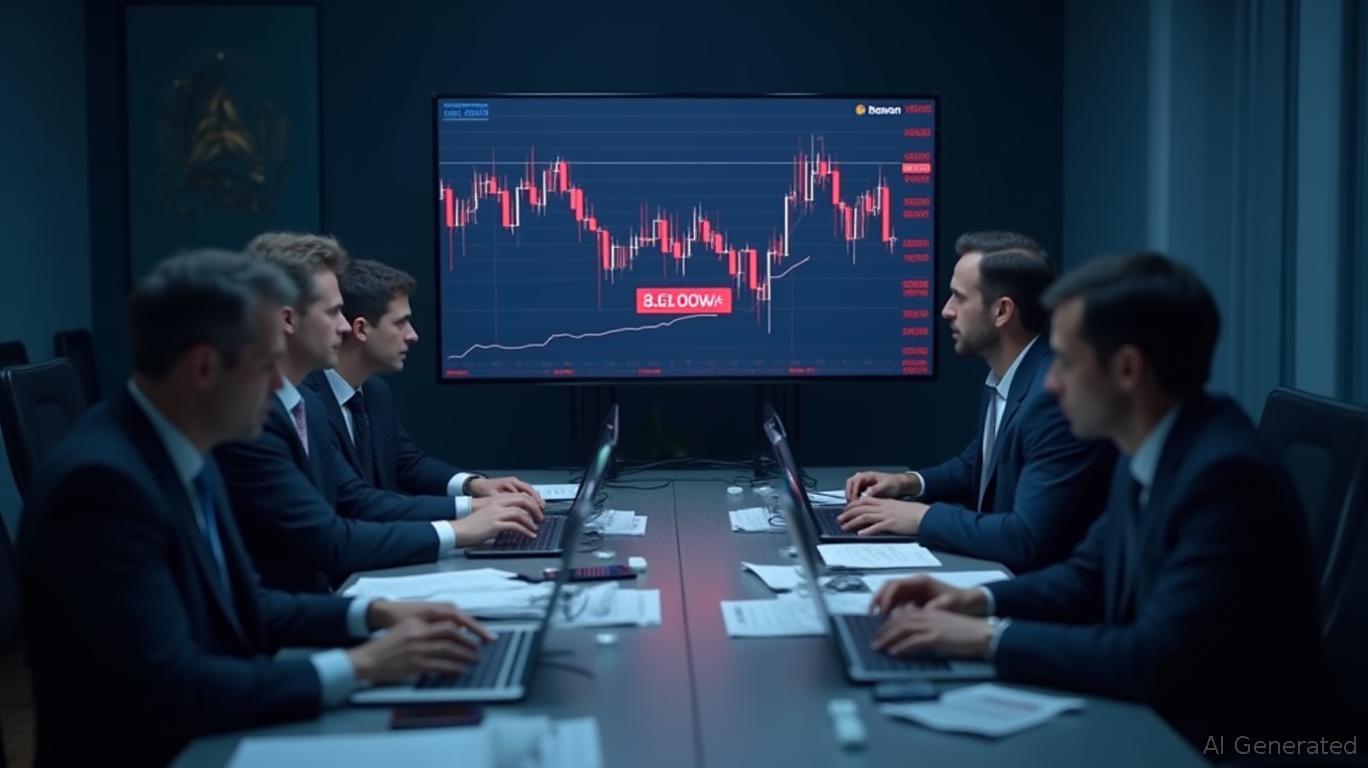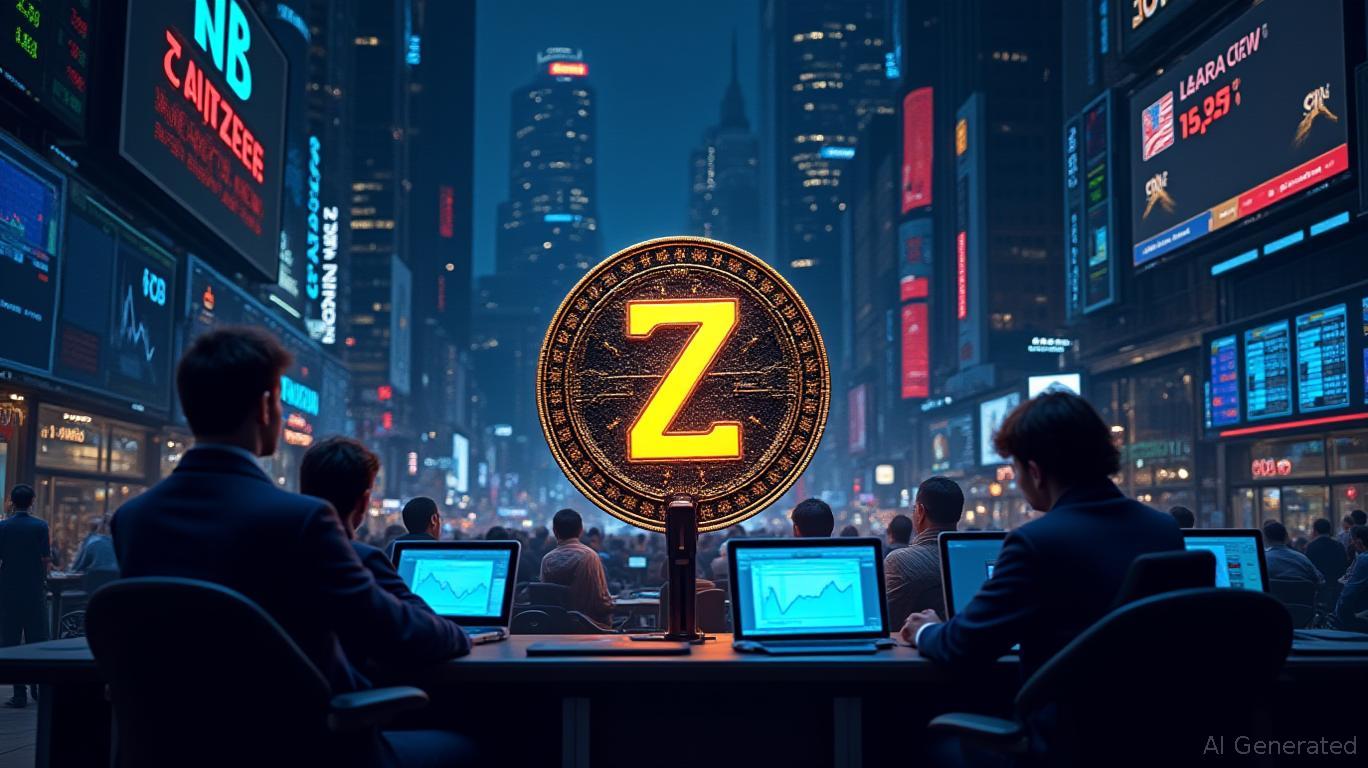ISR Technology Fuels America's Uranium Comeback to Strengthen Energy Security
- enCore Energy discovers shallow uranium deposits in Texas using ISR, cutting drilling costs by 40% and leveraging existing infrastructure for rapid production scaling. - Urano Energy acquires enCore assets to expand its uranium portfolio, aligning with U.S. energy security goals amid reduced reliance on Russian and Central Asian imports. - Federal policies and DOE initiatives prioritize domestic uranium production, with enCore's dual ISR operations (Alta Mesa/Rosita) positioned to benefit from regulatory
Recent activity in the U.S. uranium industry signals increasing momentum for homegrown nuclear fuel production, as companies such as

enCore Energy’s Alta Mesa ISR operation has uncovered several uranium-rich roll fronts within its permitted area, leading to a 40% reduction in drilling expenses due to shallower targets (320–345 feet) compared to earlier exploration, as reported by Crux Investor. By systematically reviewing historical drilling records, the company found mineralized stretches over 2,500 feet long, allowing for swift production increases without the delays of developing new sites. This method takes advantage of current infrastructure, including a processing plant capable of handling 1.5 million pounds per year, to speed up output. CEO William Sheriff highlighted ISR’s efficiency, noting, “Our uranium is extracted faster than most... Our cash flow comes in sooner, but that also requires us to keep ahead in drilling and development.”
The urgency for U.S.-based uranium production has grown as domestic utilities aim to lessen dependence on imports from Russia, Kazakhstan, and Uzbekistan. Federal actions, such as Department of Energy stockpiling and procurement programs that prioritize American-sourced uranium, are transforming the sector. enCore stands out as the only U.S. firm running multiple ISR facilities—Alta Mesa and Rosita—positioning it to benefit from these changes. With $46 million in cash and $21 million in securities as of fiscal 2024, enCore is financially prepared to support further growth while retaining flexibility.
ISR, which involves using oxygenated water to dissolve uranium underground, provides both economic and environmental benefits over traditional mining. It limits surface impact to under 5% of the project area and reduces carbon emissions, aligning with ESG goals important to utilities and investors. enCore aims to produce 3 million pounds of U₃O₈ per year by 2026 and 5 million pounds by 2028, leveraging ongoing resource expansion and Texas’s efficient regulatory environment.
Urano Energy is moving forward with its I-70 Uranium Project through a targeted acquisition of enCore Energy’s assets. Although Urano has yet to confirm historical reserve figures, its current focus is on permitting and exploration to support U.S. policy objectives. This acquisition is part of a wider trend of industry consolidation as companies seek permitted, scalable assets in a tightening uranium market.
Procurement strategies at both federal and utility levels now favor companies ready for immediate production, as projects still in development face lengthy timelines. enCore’s operational capacity and its location within Texas’s established ISR regulatory system provide a significant advantage. Its partnership with Boss Energy Limited further reduces risk, with enCore overseeing operations under a 70/30 profit-sharing structure.
With uranium prices holding strong amid global growth in nuclear power and restrictions on Russian supply, companies with low-cost, permitted production are seeing increased valuations. The advancements by enCore and the strategic moves by Urano demonstrate the industry’s alignment with U.S. energy security priorities, positioning them to benefit from ongoing supportive policies and market trends.
Disclaimer: The content of this article solely reflects the author's opinion and does not represent the platform in any capacity. This article is not intended to serve as a reference for making investment decisions.
You may also like
Ethereum News Update: Ethereum Value Drops Sharply While Institutions Increase $13.2B Investment Threefold
- BitMine Immersion Technologies, co-founded by Tom Lee, now holds 3.3M ETH ($13.2B), the largest public Ethereum reserve, signaling institutional confidence in its financial infrastructure role. - Ethereum ETFs saw $246M net inflows on Oct 28, with Fidelity and ARK leading, as total inflows reached $14.73B—5.76% of total ETH supply—despite recent volatility. - Ethereum fell 5.5% to $3,800 amid $81M ETF outflows, but institutions like SharpLink continue investing in Ethereum-based projects like Linea, show

U.S. and China Reach Temporary Agreement: One-Year Pause on Rare Earth Disputes Despite Continued Strains
- China and the U.S. reached a provisional trade truce, suspending rare earth export controls and reducing fentanyl-related tariffs for one year. - The agreement includes conditional pauses on new sanctions and Nexperia export bans, with annual renegotiation and lingering strategic vulnerabilities. - Lynas Rare Earths adjusted production amid uncertainty, while Nexperia's shipments resumed to ease automotive supply chain risks. - Market reactions remain mixed as the truce addresses immediate tensions but l

Bitcoin Updates Today: October Slump in Bitcoin Paves the Way for a November Recovery Amid Institutional Moves and Global Political Shifts
- Bitcoin's November historically averages 42.51% gains, with experts predicting a 2025 rebound after October's 3.69% drop. - Market shifts to spot trading and declining exchange balances signal accumulation, while Saylor and Kiyosaki forecast 2025 price doubling. - ETF outflows and macro risks persist, but reduced leverage and geopolitical easing (e.g., Trump-Xi meeting) support November optimism.

Zcash Strikes a Balance Between Privacy and Regulatory Standards, Surpassing Competitors and Reaching a $7 Billion Market Value
- Electric Coin Co. (ECC) released Zcash's Q4 2025 roadmap, prioritizing privacy upgrades and technical debt reduction amid ZEC's $7B market cap surge surpassing Monero and Shiba Inu. - Roadmap includes ephemeral transparent addresses, address rotation, and P2SH multisig support in hardware wallets to enhance privacy and scalability while securing the Dev Fund. - ZEC's 50% weekly price jump to $350 and 800% monthly gain reflect growing institutional adoption, Grayscale's $137M Zcash Trust, and 4.5M shielde
